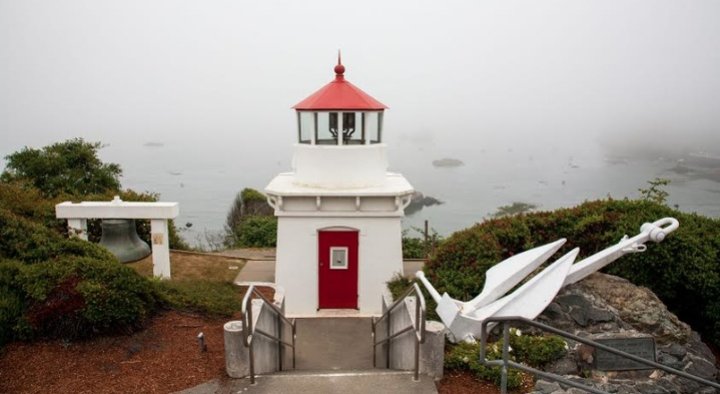
Matt Filar | Union
SHN Consulting Engineers and Geologists, Eureka, warns that whatever is done to shore up the Trinidad Memorial Lighthouse, it had better be soon.
In a Sept. 19 report to the Trinidad Civic Club, SHN Geosciences Director Gary Simpson said of the three mitigation approaches the company has outlined, the main obstacle to each “is the limited amount of time before the next rainy season.”
Simpson emphasized, “Many options are limited solely by the inability to achieve positive results before the rains begin again,” say in mid-October.

At a club meeting Sept. 20, however, the veteran engineer cited the Farmers’ Almanac forecast of an early winter arriving before then.
Probably the quickest way to stabilize the lighthouse is reinforcing it with a series of piles along the southern and western edges of the 45 by 50 foot plot, according to SHN. They would provide protection throughout the rainy season, but Simpson stresses that they are only a “very short” stopgap, not a lasting solution.
Under this approach, the lighthouse would remain directly adjacent to the continuing landslide.
Alternatively, relocating the structure 20 feet east on the same parcel would likely provide “significant additional lifespan.”
The trouble with this model is the heavy soil disruption it would inflict, which would run athwart zoning rules and strong tribal objections. Even so, Simpson demurs, “the majority of this disturbance could be remediated.” Construction would require excavating two feet below the existing surface grade.
Further, there is “a clearly stated risk” that the lighthouse might suffer “significant structural damage” while raising, moving and lowering it onto a new foundation.
Engineers don’t know if the 40 ton concrete spire is reinforced with steel or whether the cement was mixed with sand when it was built in 1949.
Simpson agrees that before proceeding, the integrity of the concrete would have to be investigated, perhaps with remote sensing, to determine if the one-foot thick sidewalls would be strong enough to withstand the heavy stresses involved in shifting the superstructure even a short distance.
# # #
Paul Mann writes for the Mad River Union. Subscribe here.
CLICK TO MANAGE